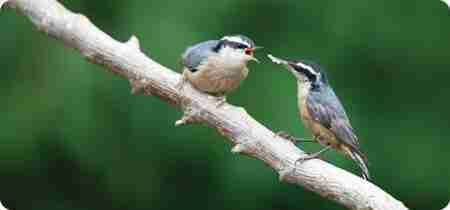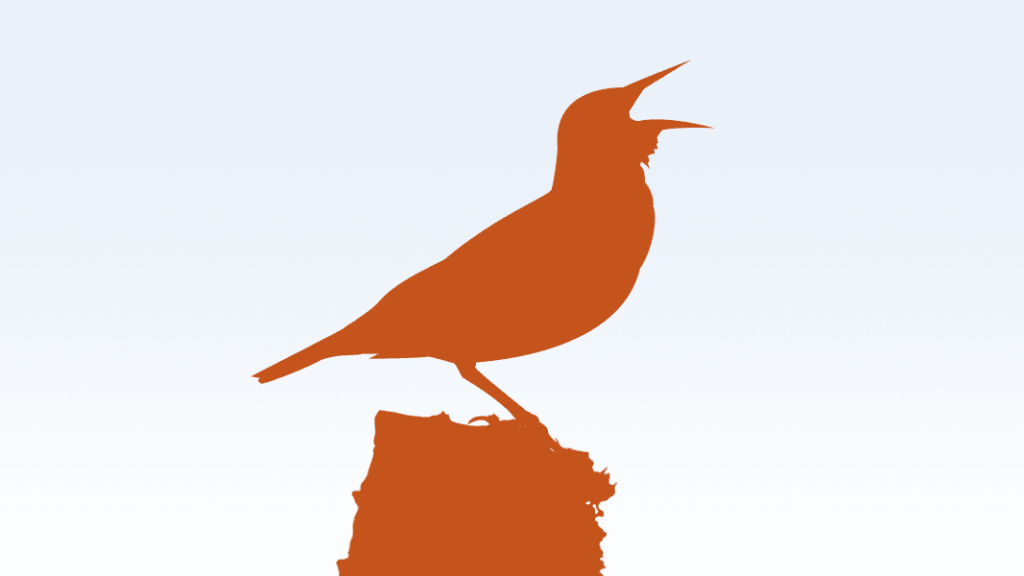I must admit, the question of whether birds are mammals might seem a bit peculiar at first glance. After all, birds chirp, fly, and lay eggs while mammals roam the land, give birth to live young, and nurse their babies. However, upon closer examination, an intriguing connection emerges between these two seemingly different groups of creatures. Join me as we embark on a fascinating journey to explore the fascinating world of avian and mammalian biology, and uncover the surprising similarities that lie beneath their feathers and fur.
Definition of Birds
Feathered Vertebrates
Birds are a unique group of animals that belong to the class Aves. They are characterized by their feathered bodies, which set them apart from other vertebrates. Feathers serve various purposes for birds, including flight, insulation, and courtship displays. The structure of feathers allows for lightweight yet strong wings, enabling birds to soar through the air with grace and agility.
Endothermic Warm-Blooded Animals
One of the defining characteristics of birds is their endothermic nature. Unlike cold-blooded animals, birds are able to regulate their body temperature internally, maintaining a relatively stable and warm body temperature. This ability is crucial for their survival, as it allows birds to thrive in various environments and climates.
Air-Breathing
Birds, like mammals, have a specialized respiratory system that enables them to extract oxygen from the air. Their lungs are efficient and adapted for a high metabolic rate, allowing birds to meet their oxygen demands during flight and other activities. The unique structure of their respiratory system involves the passage of air through numerous air sacs, ensuring a constant supply of oxygen.
Lay Hard-Shelled Eggs
One of the most distinctive characteristics of birds is their ability to lay hard-shelled eggs. Unlike live-bearing mammals, birds produce eggs that are covered in a protective calcium-based shell. This adaptation allows birds to reproduce on land, with the eggs providing a safe environment for embryonic development. Birds exhibit various nesting behaviors, from building intricate nests to incubating their eggs.
Possess Beaks and Wings
Birds possess beaks, which play a crucial role in their feeding habits. The shape and size of a bird’s beak determine its dietary preferences, whether it be for probing flowers for nectar or hunting for fish in the water. Additionally, birds have wings, which enable them to fly. The structure of their wings, combined with their feathers, allows birds to generate lift and propel themselves through the air.
Characteristics of Mammals
Hair or Fur
Mammals are characterized by having hair or fur covering their bodies. This unique feature provides insulation, protection, and sensory functions for mammals. Hair can vary significantly in texture, color, and density, serving different purposes depending on the species and environment.
Mammary Glands
Mammals possess mammary glands, specialized structures that produce milk to nourish their young. These glands are unique to mammals and are a defining characteristic of the class. Through lactation, mammals provide their offspring with essential nutrients and antibodies, promoting their growth and development.
Internal Skeleton
Mammals have an internal skeleton, composed of bones and cartilage, that provides support, protection, and allows for movement. The skeletal system of mammals is highly adaptable, allowing for various forms of locomotion, from walking and running to swimming and flying, depending on the species.
Four-Chambered Hearts
Unlike birds, mammals have four-chambered hearts, which allow for efficient circulation of blood throughout the body. This advanced circulatory system enables mammals to sustain high metabolic rates, delivering oxygen and nutrients to their tissues and organs effectively.
Ability to Nurse Their Young
Mammals have a unique reproductive strategy that involves the nourishment of their young through nursing. Female mammals produce milk, and their offspring suckle from their mammary glands. This intimate and nurturing bond between mother and offspring is a fundamental aspect of mammalian reproductive biology.
Birds Vs. Mammals
Evolutionary Divergence
Birds and mammals diverged from a common ancestor hundreds of millions of years ago, resulting in the formation of distinct classes within the animal kingdom. Despite sharing certain characteristics, such as endothermy and internal fertilization, birds and mammals have evolved different adaptations and life histories over time.
Different Classes of Vertebrates
Birds and mammals belong to different classes of vertebrates. Birds are part of the class Aves, while mammals belong to the class Mammalia. The classification of these two groups reflects their unique anatomical, physiological, and behavioral characteristics that set them apart from each other.
Distinctive Features
Birds and mammals possess distinctive features that differentiate them from one another. Feathers and beaks are characteristic of birds, whereas hair or fur and mammary glands are unique to mammals. These adaptations are crucial for the survival and success of each group in their respective environments.

Reproduction Methods
Reproduction methods also differ between birds and mammals. Birds lay hard-shelled eggs, which are incubated and hatched outside of the female’s body. In contrast, mammals give birth to live young, with the mother nourishing and caring for her offspring until they are capable of independent survival.
Feeding and Breathing Processes
Birds have beaks specifically adapted to their unique feeding strategies, whether it is capturing prey, filter-feeding, or consuming plant matter. Mammals, on the other hand, possess diverse feeding adaptations, including specialized teeth for grinding, tearing, or consuming a varied diet. The respiratory systems of birds and mammals also have distinct characteristics, tailored to their specific metabolic needs.
Distinguishing Avian Characteristics
Feathers for Flight and Insulation
Feathers are a defining feature of birds, providing them with the ability to fly and offering insulation against heat loss. The structure and arrangement of feathers vary across bird species, with flight feathers being long, stiff, and symmetrically arranged to generate lift during flight.
Lightweight Skeletons
Birds have lightweight skeletons, composed of air sacs and thin, hollow bones. This adaptation minimizes their weight, making it easier for them to achieve flight. Additionally, the hollow bones of birds are reinforced with internal struts, providing strength while maintaining a lightweight structure.
Beaks and Talons
Birds possess beaks that are adapted to their specific feeding behaviors and dietary preferences. From the sharp, hooked beaks of raptors to the long, slender beaks of hummingbirds, the shape and structure of a bird’s beak play a crucial role in its survival and success. Birds of prey also have sharp talons that allow them to capture and handle their prey efficiently.
Laying Hard-Shelled Eggs
Birds lay eggs that are enclosed within a hard shell, protecting the developing embryo from environmental hazards. The shape and size of the eggs vary among bird species, depending on their nesting habits and reproductive strategies. Different bird species exhibit various nesting behaviors, from building elaborate nests to using pre-existing structures or burrows.
Efficient Respiratory System
Birds have a highly efficient respiratory system that enables them to meet the oxygen demands required for flight. Air flows in a unidirectional manner through their respiratory system, facilitated by the presence of air sacs. This unique system allows for a continuous supply of oxygen, enhancing their endurance and performance during flight.
Mammalian Features
Hair or Fur for Insulation
Hair or fur is a prominent feature of mammals, providing them with insulation against extreme temperatures. The dense layer of hair traps air, creating a thermal barrier that helps regulate body temperature. In addition to insulation, hair or fur can also serve as camouflage or play a role in communication and social interactions.
Mammary Glands for Milk Production
Mammary glands are a defining characteristic of mammals and are responsible for the production of milk. Female mammals nurse their young, providing them with vital nutrients, antibodies, and hormones necessary for growth and development. The composition of milk can vary among mammalian species, tailored to the specific needs of their offspring.
Endothermy and Four-Chambered Hearts
Mammals are endothermic animals, capable of maintaining a relatively constant and elevated body temperature. This endothermic nature enables mammals to inhabit diverse environments and adapt to fluctuating temperatures. Mammals also have four-chambered hearts, allowing for efficient circulation and a rapid exchange of oxygen and nutrients.
Internal Skeleton with Different Bone Structures
Mammals possess an internal skeleton made up of bones and cartilage that provides support, protection, and facilitates movement. The bone structures of mammals are diverse, ranging from the long and weight-bearing bones of terrestrial mammals to the streamlined and elongated bones of aquatic mammals like dolphins and whales.
Live Birth or Lactation
Most mammals give birth to live young, with internal fertilization occurring within the female’s reproductive system. Live birth allows for a longer period of parental care and protection of the offspring. In addition to live birth, mammals use lactation as a means of nourishing their young, ensuring their proper growth and development.
Examples of Birds
Chickens and Other Domesticated Birds
Chickens are a well-known example of birds commonly found in domesticated settings. These birds, which belong to the species Gallus gallus domesticus, are raised for meat and egg production. They are descendants of wild junglefowl and have been selectively bred for specific traits over many generations.

Eagles and Other Birds of Prey
Eagles, such as the Bald Eagle and the Golden Eagle, are majestic examples of birds of prey. These birds have sharp, hooked beaks and talons that enable them to capture and feed on small mammals and fish. Birds of prey play crucial roles in ecosystems by controlling populations of other animals and maintaining a balanced food chain.
Flamingos and Other Water Birds
Flamingos are known for their vibrant pink plumage and unique feeding methods. These large wading birds are found in various parts of the world and inhabit saltwater and alkaline lakes. Flamingos use their specialized beaks to filter small organisms from the water and rely on their long legs for stability while feeding.
Hummingbirds and Other Nectar Feeders
Hummingbirds are small, colorful birds known for their ability to hover in mid-air and their rapid wing movements. These birds possess long, slender beaks adapted for feeding on nectar from flowers. Hummingbirds are important pollinators and play a crucial role in the reproduction of various plant species.
Penguins and Other Flightless Birds
Penguins are a prime example of flightless birds that have adapted to life in aquatic environments. These birds, found predominantly in the Southern Hemisphere, have streamlined bodies and wings modified into flippers for efficient swimming. Despite their inability to fly, penguins are exceptional swimmers, relying on their wings for propulsion.
Examples of Mammals
Humans and Other Primates
Humans, as members of the primate order, are notable examples of mammals. Our species, Homo sapiens, possesses unique characteristics such as bipedal locomotion, an advanced cognitive capacity, and the ability to use tools. Humans have successfully colonized diverse habitats worldwide, demonstrating the adaptability and versatility of mammals.
Dogs, Cats, and Other Carnivores
Dogs and cats, along with other carnivores such as wolves, lions, and tigers, belong to the order Carnivora. These mammals have specialized teeth and claws adapted for capturing, killing, and consuming prey. Domesticated dogs and cats have been long-standing companions of humans, showcasing the strong bond that can form between humans and animals.
Whales and Dolphins
Whales and dolphins, known as cetaceans, are large aquatic mammals that have fully adapted to life in the water. These mammals have streamlined bodies, blowholes for breathing, and flippers or flukes for propulsion. Whales and dolphins exhibit complex social behaviors, sophisticated communication systems, and impressive diving abilities.
Elephants and Rhinoceroses
Elephants and rhinoceroses are massive mammals found in different parts of the world. Elephants are known for their impressive size, long trunks, and tusks, while rhinoceroses are recognized for their horned noses. Both of these mammals play essential roles in their ecosystems and face various conservation challenges due to habitat loss and poaching.
Bats and Other Flying Mammals
Bats are unique mammals that have the ability to fly. These nocturnal creatures have elongated fingers and a thin membrane of skin called the patagium, which stretches between their limbs to form wings. Bats play a critical ecological role as pollinators, seed dispersers, and insect controllers, contributing to the balance of various ecosystems.





Similarities in Anatomy
Structural Proportions
While birds and mammals differ in many aspects of their anatomy, there are similarities in their overall structural proportions. Both groups of animals have a distinct head, followed by a body, appendages, and a tail in some species. The relative sizes and shapes of these body parts may vary greatly depending on the species’ adaptation to specific habitats and ecological niches.
Similar Organ Systems
Birds and mammals share similarities in their organ systems, including the digestive, circulatory, respiratory, and nervous systems. Although there are variations in organ structure and function, the foundational principles of these systems are conserved among vertebrates.
Complex Brains
Both birds and mammals possess relatively large brains compared to other groups of animals. In birds, the forebrain is highly developed and responsible for complex behavior, learning, and memory. In mammals, the brain is characterized by an enlarged cerebral cortex, responsible for higher cognitive functions such as decision-making, problem-solving, and sensory perception.
Advanced Sensory Systems
Birds and mammals have evolved advanced sensory systems to navigate and interact with their environment effectively. Both groups possess well-developed visual systems, allowing for keen eyesight and color perception. Hearing is also highly developed in birds and mammals, with specialized adaptations to detect sounds and communicate with conspecifics.
Similar Skeletal Structures
Birds and mammals share a similar arrangement of bones in their skeleton, including a vertebral column, appendicular skeleton, and skull. The structures of the limbs and joints in both groups provide the basis for various forms of locomotion and facilitate specialized movements required for survival and reproduction.
Convergent Evolution
Similar Adaptations in Different Groups
Convergent evolution refers to the independent development of similar adaptations in different groups of organisms facing similar ecological challenges. Birds and bats, for example, have both evolved the ability to fly, despite their distinct evolutionary lineages. This phenomenon highlights the power of natural selection in shaping the traits and characteristics of animals.
Independent Evolution of Similar Traits
Convergent evolution can lead to the independent evolution of similar traits in unrelated species. For instance, dolphins and sharks have streamlined bodies, fins, and tails for efficient swimming, despite their divergent evolutionary histories. By converging on similar solutions, these animals have successfully adapted to their aquatic habitats.
Examples of Convergent Evolution Cases
There are numerous examples of convergent evolution across the animal kingdom. One notable example is the evolution of similar body shapes and behaviors between dolphins and ichthyosaurs, an extinct group of marine reptiles. Both groups underwent independent adaptations to thrive in the marine environment, resulting in striking similarities in their overall appearance and lifestyle.
Conclusion
Birds and mammals represent two distinct classes of vertebrates, each with its own set of defining characteristics and evolutionary paths. While birds are characterized by their feathers, beaks, and ability to fly, mammals possess hair or fur, mammary glands, and internal fertilization. These unique adaptations reflect the diverse strategies employed by birds and mammals to survive and reproduce in their respective habitats.
Despite their differences, birds and mammals share certain anatomical and physiological similarities, such as complex brains, advanced sensory systems, and similar skeletal structures. The phenomenon of convergent evolution further highlights the incredible adaptability and diversity of life on Earth, with different species independently developing similar traits to suit their ecological needs.
In conclusion, birds and mammals are distinct groups of animals, each with its own set of shared attributes and evolutionary paths. The study of these fascinating classes allows us to appreciate the incredible diversity and complexity of the natural world and provides insights into the intricacies of life’s remarkable adaptations and transformations. Whether soaring through the skies or dominating the land and sea, birds and mammals continue to captivate our imagination and inspire our curiosity about the natural world.



